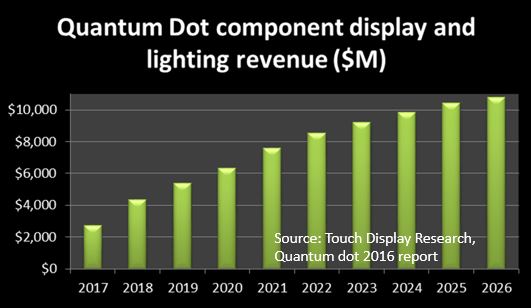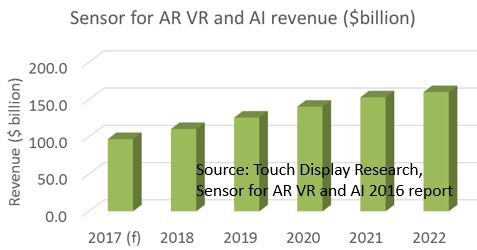July 22, 2016
Today, Nanoco, a world leader in the development and manufacture of cadmium-free quantum dots and other nanomaterials, announced a good news—it signed a seven-year supply and licensing agreement to supply Cadmium-free quantum dot to Wah Hong Industrial Corporation. Wah Hong is a leading Taiwanese manufacturer and supplier of optical films.
Quantum dot market has been growing rapidly in recent couple of years. Just 2 months ago, Nanosys announced that Hitachi Chemical and Nanosys have partnered in the development of QDEF (quantum dot enhancement film) for display applications. Hitachi Chemical plans to begin shipping QDEF in mass production volumes during the 2nd half of 2016.
In the recently published “Quantum Dot Display and Lighting Technologies and Market Forecast Report (Third Edition),” Touch Display Research surveyed many quantum dot suppliers, display manufacturers and OEMs, and analyzed and forecasted the quantum dot display component market with detail of material type and form factor. This report profiles over 80 companies working on quantum dot materials and quantum dot components. Touch Display Research forecasts the overall QD display component and lighting and QLED market will surpass $2 billion by 2017, and reach $10.8 billion by 2026.
Figure 1. Quantum Dot Display and Lighting Technologies and Market Forecast
Source: Touch Display Research, 2016
“Quantum dot technology could improve Liquid Crystal Display (LCD) dramatically in terms of color gamut, color accuracy and reducing power consumption. The number of companies working on quantum dot has increased to over 80 in 2016 from just 60 companies in 2015,” said Dr. Jennifer Colegrove, CEO and principal analyst of Touch Display Research Inc. “We forecast quantum dot components will have a rapid penetration into displays and lighting from 2016 to 2026.”
The report provides market forecast with a detailed breakdown by Cadmium-type quantum dot and Cd-free quantum dot.
The “Quantum Dot Display and Lighting Technologies and Market Forecast Report” Third Edition is available immediately and includes a PowerPoint file of over 290 pages and an Excel database.
A license for less than five users is $3800 for this report. The license for five or more users is $4800.
You can subscribe on our website: www.touchdisplayresearch.com in the Market research report page or by email: jc@touchdisplayresearch.com
Thanks for reading,
Dr. Jennifer Colegrove and team



